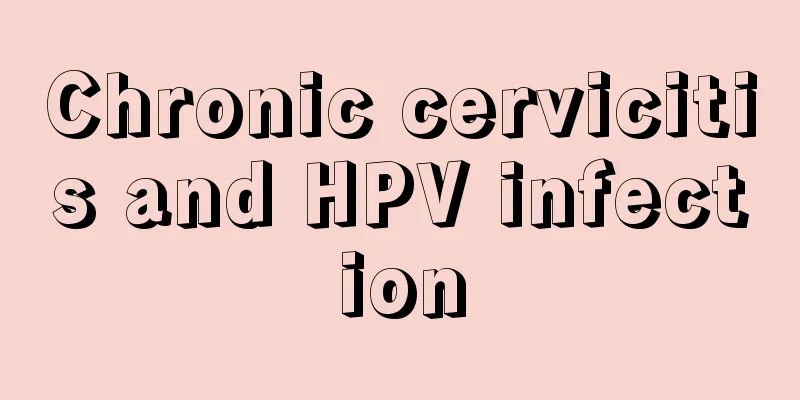Chronic cervicitis and HPV infection

|
Chronic cervicitis and HPV infection are two different diseases. Chronic cervicitis is often related to neglect of personal hygiene and unclean sexual life. In addition, if it occurs during gynecological surgery without attention, it may cause infection. HPV infection is a human papillomavirus infection, which is a relatively serious sexually transmitted disease that is more harmful to humans and is also an important cause of cervical cancer. Chronic cervicitis and HPV infection 1. Cervicitis is a common disease among women of childbearing age, and it can be either acute or chronic. Acute and chronic cervicitis often coexist with acute endometritis or acute vaginitis, but chronic cervicitis is more common. Acute cervicitis often coexists with acute endometritis or acute vaginitis, but chronic cervicitis is more common. 2. The main manifestation of cervicitis is increased vaginal discharge, which is viscous mucus or purulent mucus, sometimes accompanied by or mixed with blood. However, the leucorrhea of chronic cervicitis is milky white mucus or light yellow pus; in severe cervical erosion or cervical polyps, it may be bloody leucorrhea or bleeding after sexual intercourse. In mild cases, there may be no systemic symptoms. When the inflammation spreads along the uterosacral ligament to the pelvic cavity, there may be pain in the lumbar region, a feeling of heaviness in the lower abdomen, and dysmenorrhea, which worsens during bowel movements and sexual intercourse. 3. Chronic cervicitis may be accompanied by HPV infection. Pathogen infection may cause cervicitis due to delivery, miscarriage or surgical injury. Cervicitis can be treated with some professional Chinese medicine. How to treat chronic cervicitis and HPV infection Patients who do not have high-risk HPV infection can undergo regular examinations and close monitoring. Local physical therapy should be performed for patients whose cytology is ≥ atypical squamous cells (ASCUS), who have persistent HPV positivity, or who become positive again after turning negative. If there is moderate or severe cervical columnar epithelial ectopia and HPV is positive, the patient urgently requires treatment. Local physical or drug treatment can be performed if there are no follow-up conditions. Laser treatment has been done, and local treatment with vaginal interferon preparations is currently recommended, and HPV and TCT should be rechecked after three months. The above is a brief introduction to the problems of chronic cervicitis and HPV infection. First of all, we must understand that if we pay attention to personal hygiene, we will generally not get this disease. Especially for people with low immunity, they should pay more attention to personal hygiene, avoid taking a bath in public bathing places, and avoid going to hot springs to avoid gynecological diseases. |
<<: When do ovaries begin to age?
>>: Will ovarian cysts cause back pain?
Recommend
How to take oral rehydration salt powder?
Oral rehydration salts are the preferred oral reh...
Wisdom tooth inflammation and swollen lymph nodes
I believe that many people are tortured by dental...
Is it okay to use tampons?
Whether tampons are useful or not depends on the ...
What festivals do we drink chrysanthemum wine on? What are the origins of chrysanthemum wine?
During the Double Ninth Festival, Chinese people ...
Four-dimensional color ultrasound transparent cavity
Four-dimensional color ultrasound is a type of co...
High blood coagulation in pregnant women
Pregnancy is a special period and it is also a st...
Causes of Alopecia Areata in Girls
Don't think that only men will suffer from al...
Why is there so much white transparent mucus flowing out?
A lot of white mucus flows out of the vagina, whi...
Are syphilis test strips accurate?
Syphilis is believed to have been heard by many p...
What characteristics should women look for to delay aging?
Time flies so fast that it takes away people'...
When doing myopia surgery, the higher the degree, the more expensive it is?
"I have 800 degrees of myopia. Will the cost...
How many days can I use a test strip to detect my period?
Many people like to use pregnancy test sticks to ...
Why don’t ophthalmologists perform myopia surgery?
When talking about myopia surgery , we used to he...
What is the difference between miscarriage and abortion?
There is actually an essential difference between...
What is the reason for a small lump in a woman's groin?
In daily life, the appearance of small bumps in t...









